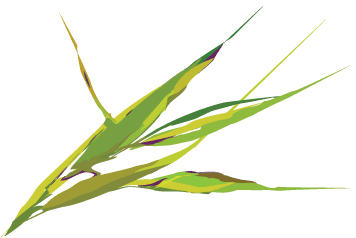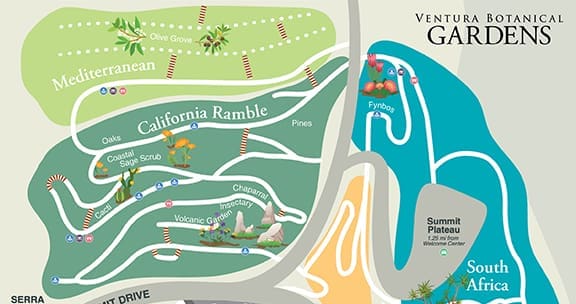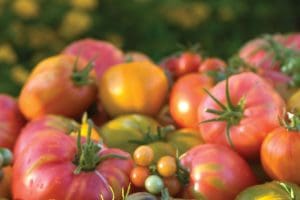Support the Gardens
Learn more about becoming a VBG Member, or donate to protect biodiversity today!

Current Career Opportunities
HOURS
Tuesdays — Sundays 9am to 5pm, closed Mondays.
$7 admission for the general public.
Members, children 18 and under and EBT cardholders are free. Fridays are FREE. Check out our Facebook page for holiday FREE days as well. We are CLOSED on rainy days.
Leashed dogs are welcome Wednesdays, Fridays and monthly FREE days.
Disabled parking is available at the Welcome Center. Guests can request parking closer to the pathways above the nurseries if desired.

Upcoming Events
Membership
NEW! Preferred memberships now include a 'Buddy Pass'. When you visit the Gardens, bring a friend for free!
Members also receive reciprocal admissions to other gardens like the Santa Barbara Botanical Gardens. To learn more about which Gardens are covered in your membership: ahsgardening.org
Visiting the Ventura Botanical Gardens
The Ventura Botanical Gardens (VBG) is a 107-acre world-class site with spectacular views of the California coastline, verdant agricultural vistas, the Channel Islands and Ojai’s Topa Topa peak.
With over 120,000 plants in the ground, the Gardens represent the five Mediterranean climate zones of the world; Chile, the Cape of South Africa, Australia, the Mediterranean Basin and California. These low water climate zones, like Ventura, allow for long-term sustainability and are designed to replicate plant communities as they occur in nature.
Your visit to the Gardens will begin at the Merewether Welcome Center. You will notice a charming gift shop, full of artisan gifts, pottery, and plants.
A flower pathway takes you past our olive trees and through our nursery where we have dedicated spaces to welcome students on field trips. Here we prepare and propagate plants before we add them to our collection.
As you enter the first walkway of the Chilean Gardens, you will see a Chilean Soapbark Tree on your right. The Soapbark Tree provides an adjuvant, a chemical compound boosting immunity and enhancing effectiveness, for the shingles and COVID-19 vaccines.
Further along the way, you will note our large Chilean Wine Palms, part of our collection of endangered species. The work we do at the Gardens includes protecting and propagating at-risk species and creating a library of plants and seeds.
As you continue toward the top, check out our cheerful ribbed barrel cactus or take a meditation moment at one of our sponsored benches and enjoy the brightly-colored cistanthe grandiflora along the way.
When you reach Rotary Plaza, shaded by old-growth Eucalyptus trees, notice the California Ramble to your left left and right. The Ramble, our largest garden, contains native species like ceanothus, lemonade berry and California oak, and in the springtime, colorful poppy and lupine blooms.
Upward in our Mediterranean Garden, there are 200 olive tree saplings. With 50 different cultivars, these plants will provide conservation and research opportunities for an agricultural resource that humans have developed over millennia. This grove will enable us to examine what cultivars do well in regional agriculture as our climate changes.
To your right and up the hill is the South African Fynbos Gardens, abundant with protea, ericas, bulbs and geraniums, a dry creek bed, and a charming bridge. Looking back toward the entrance, enjoy a spectacular view of the Channel Islands.
Continue to Summit Plateau, lined with California pepper trees, where many of our events occur. Then on to the Karoo Gardens... abundant with Aloe. Here you will feel like you’re at the top of the world.
As a 40-year project, VBG will continue to grow and create new outdoor opportunities for training, research, and educational programs ranging from horticulture and botany to sustainability. Garden expansion will be ongoing for decades to come.
Come back soon, there is always something new to see.
Conservation
The foundation for all botanical gardens is to maintain a collection of plants for scientific research, display, education and conservation. We take this role to heart, protecting endangered and threatened species to insure their long term survival. Some of the plants under our stewardship include the Chilean Wine Palm, the California Tecate cypress, mariposa lilies, and numerous native wildflowers threatened by loss of habitat.
DONATE
Support the gardens today!
PLANNED GIVING
Support the future of the gardens.
MEMBERSHIP
Become a member!













